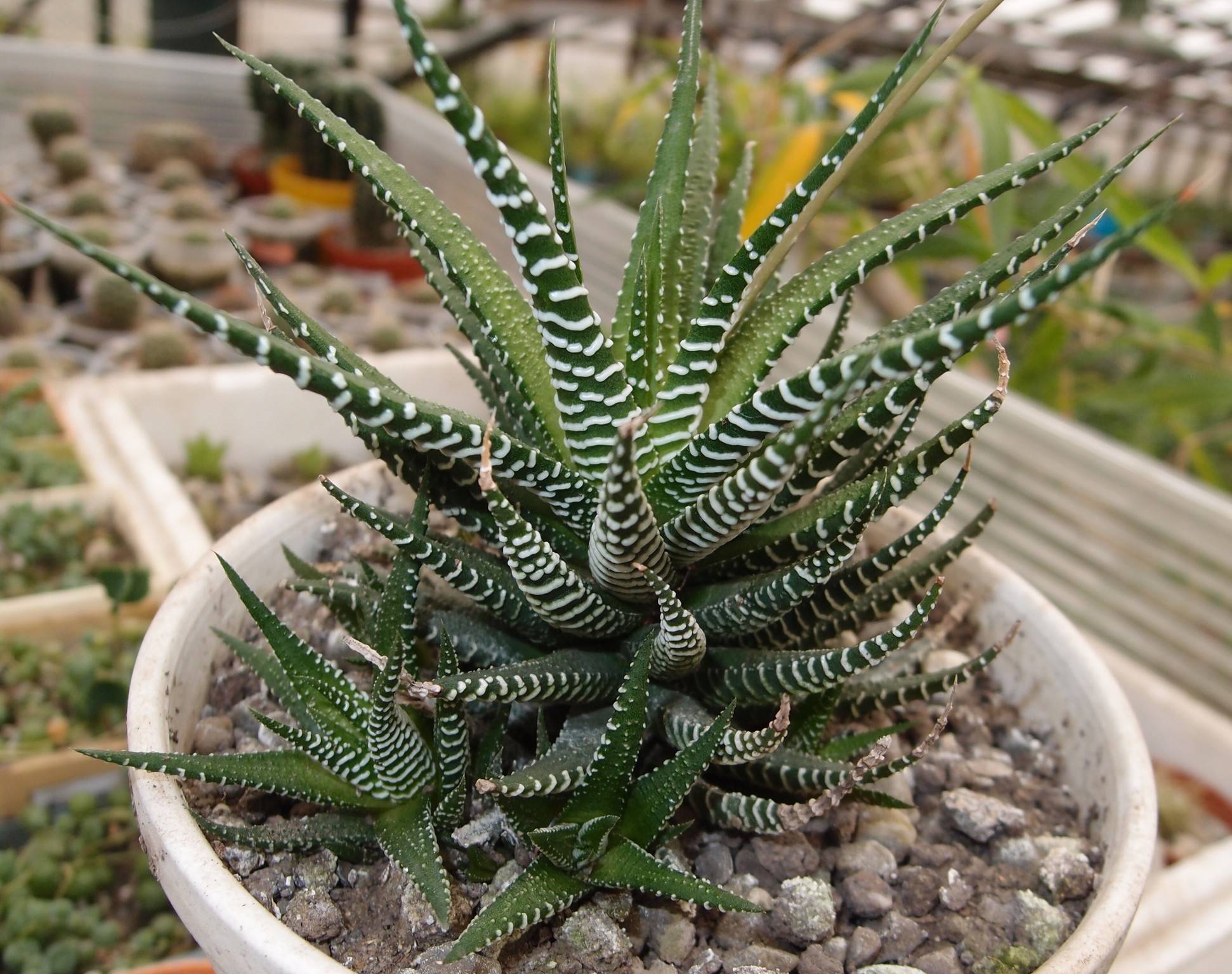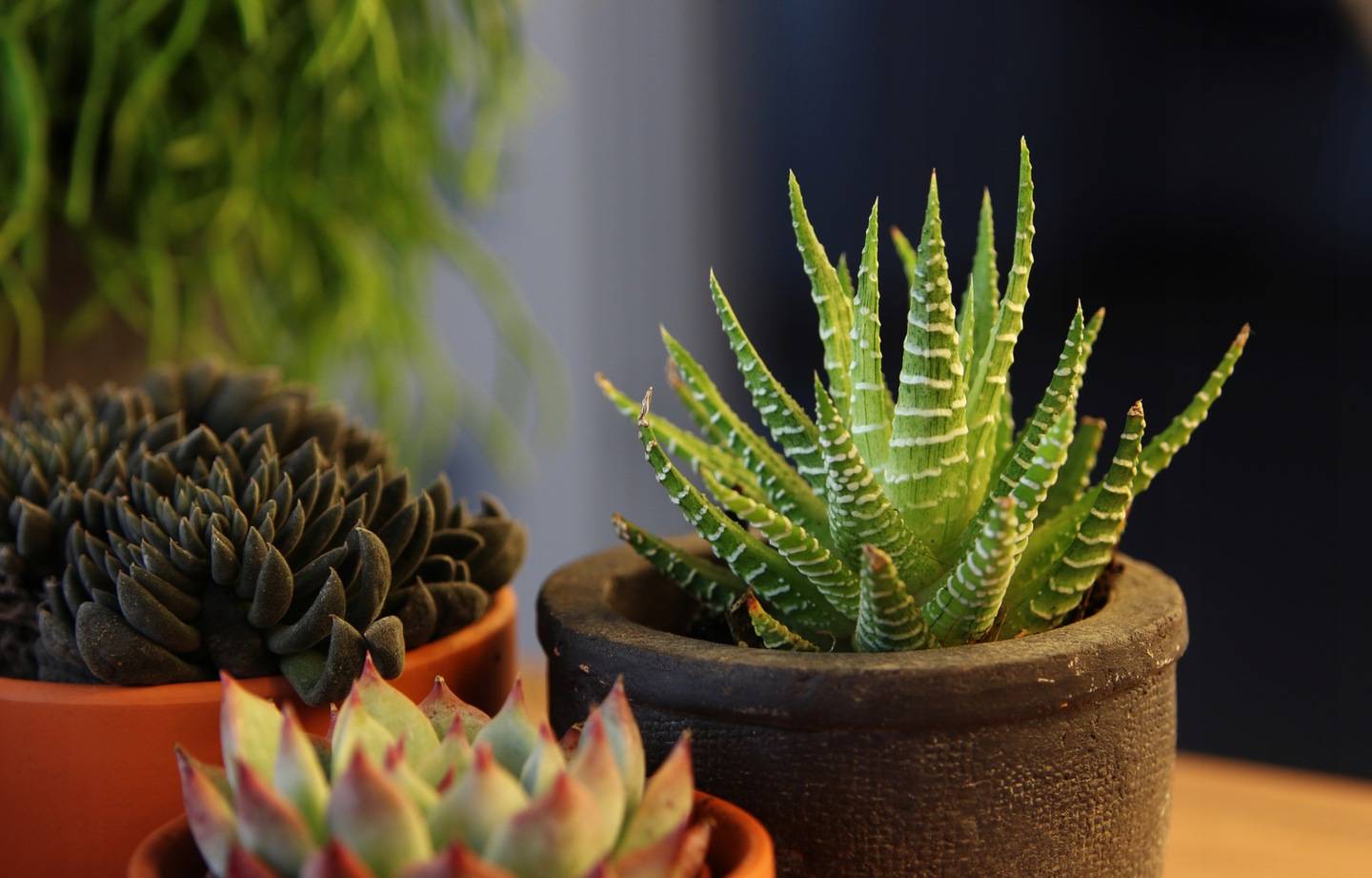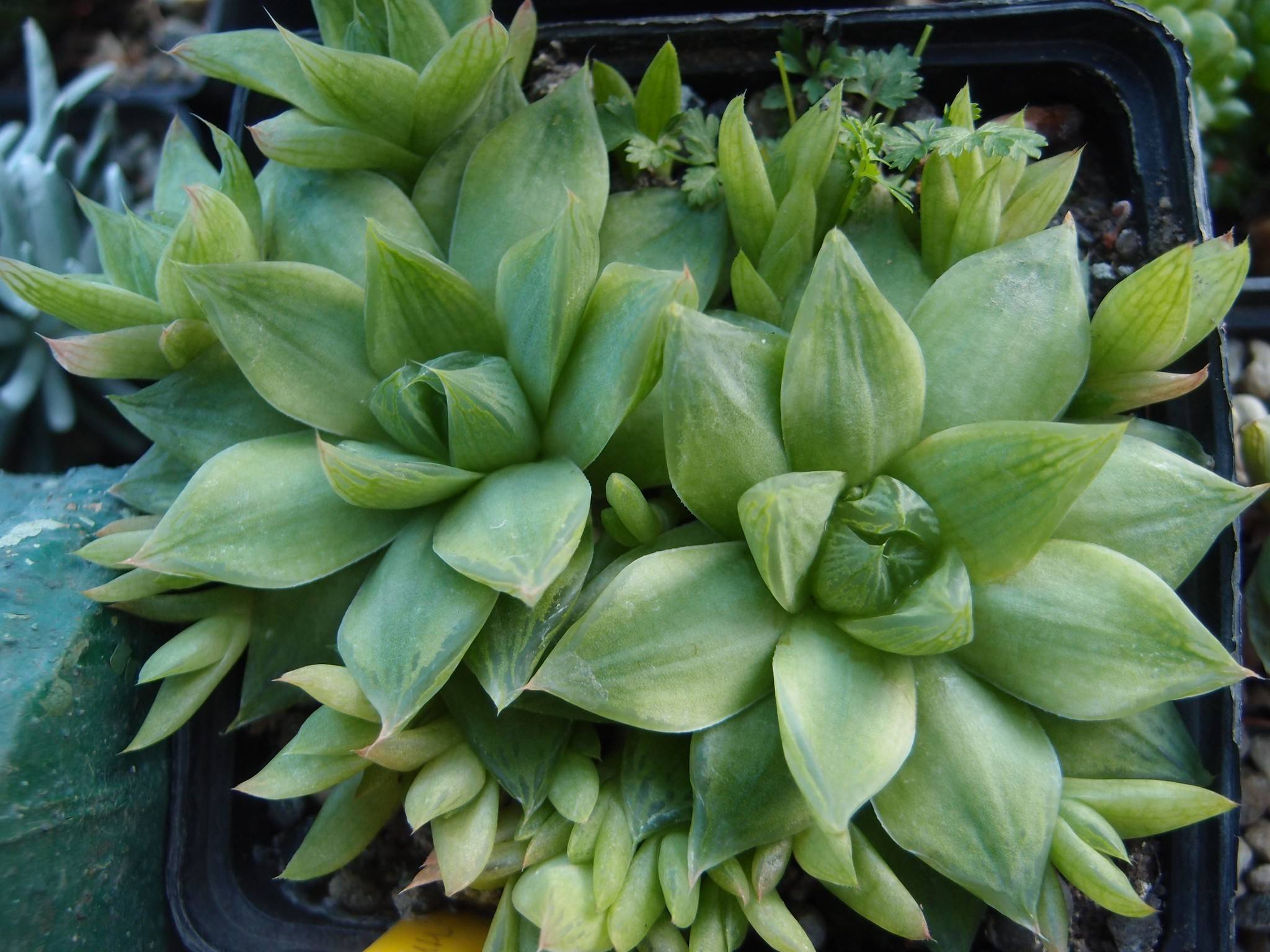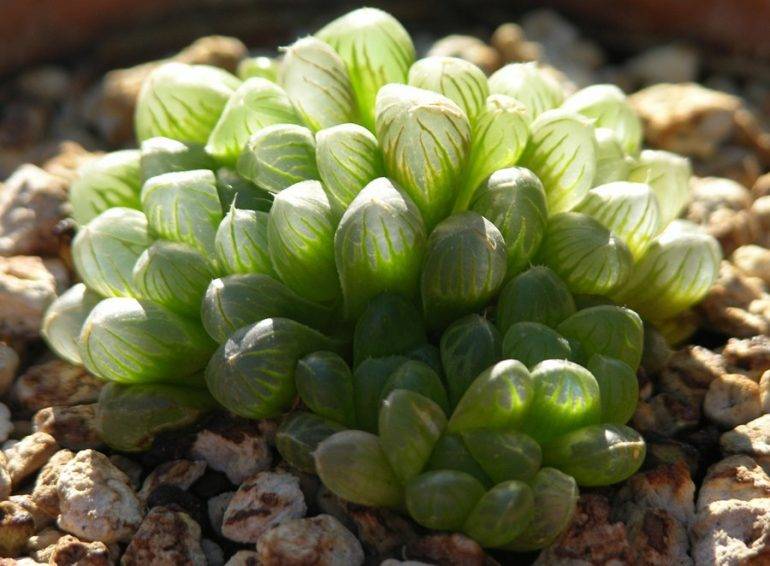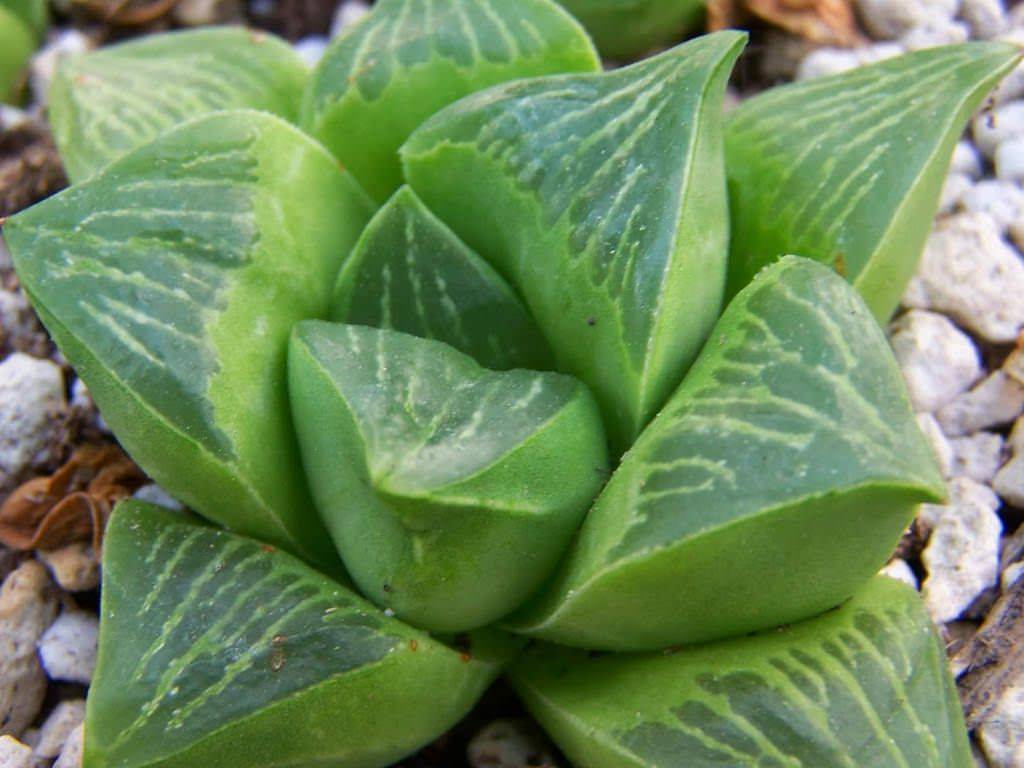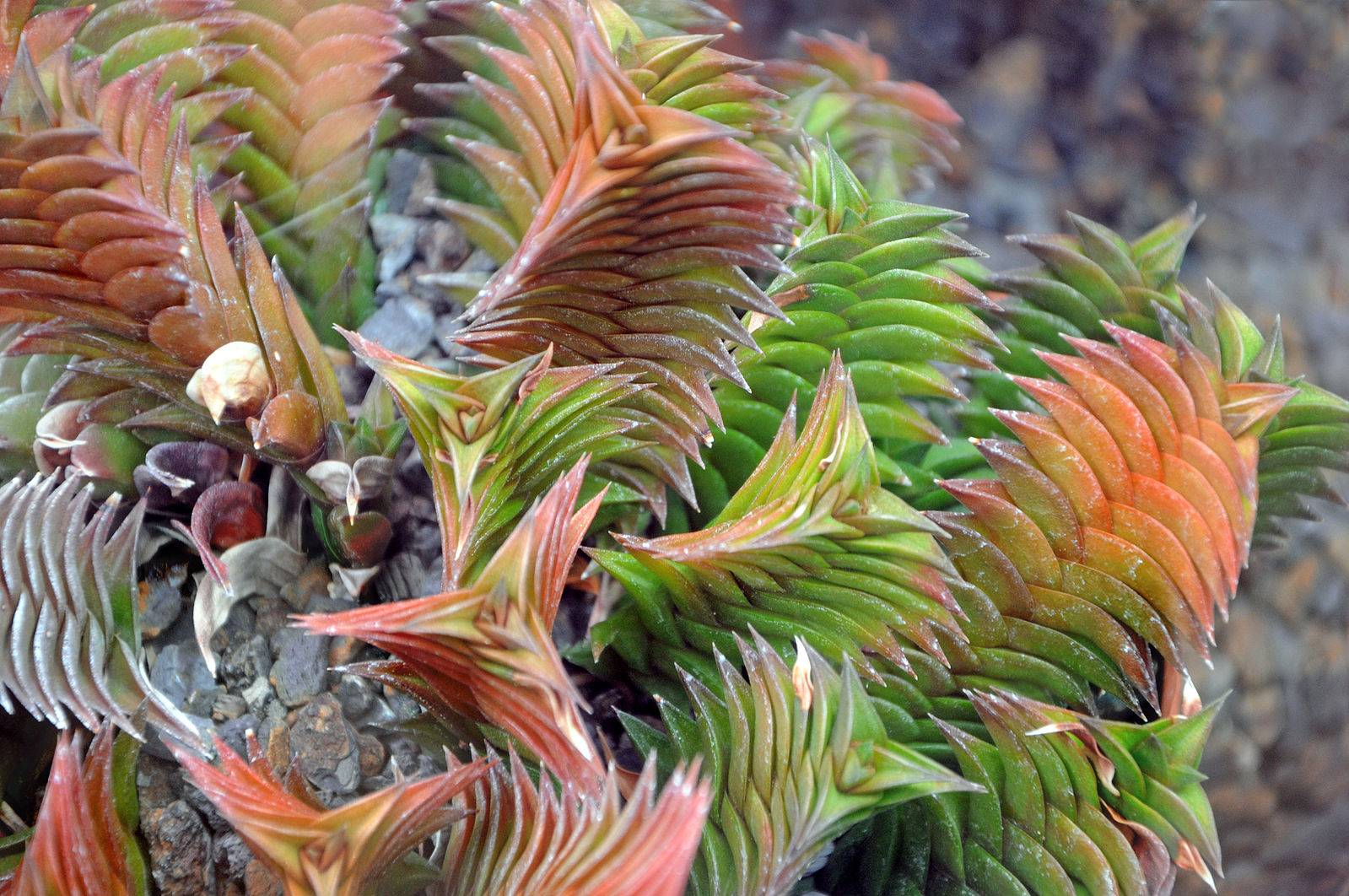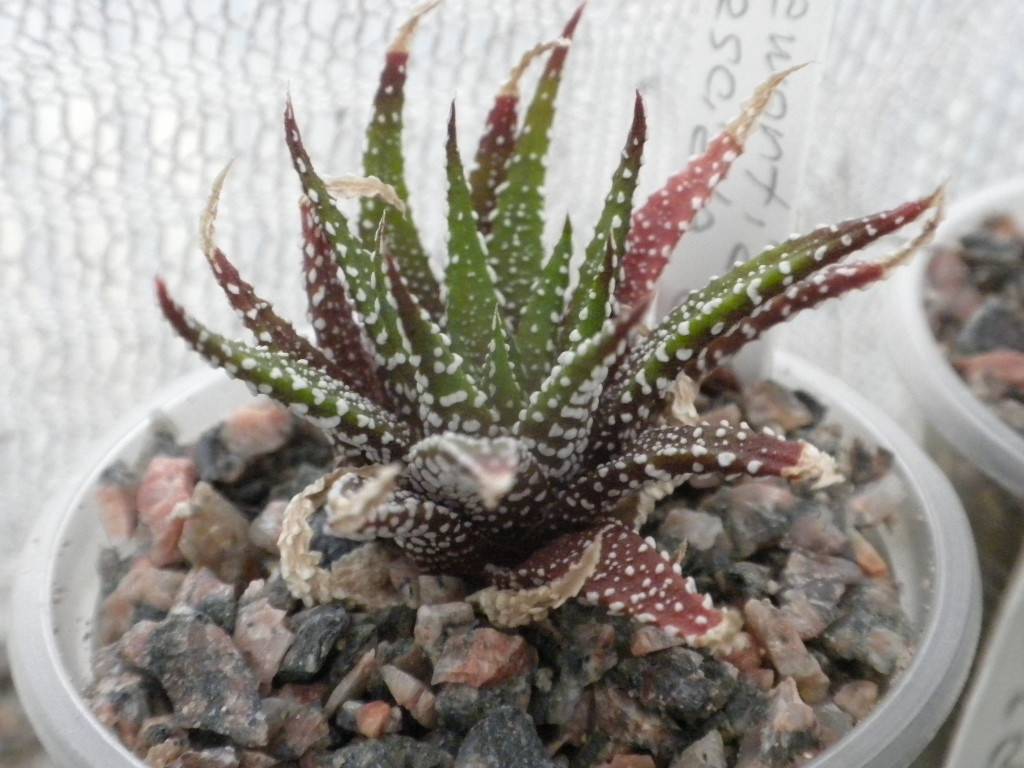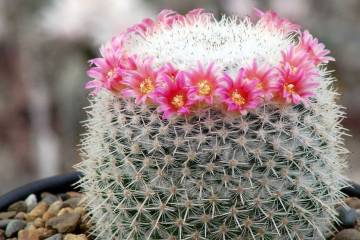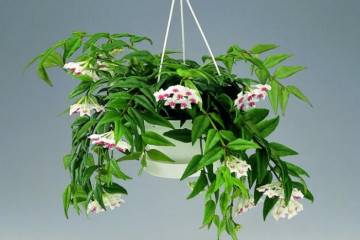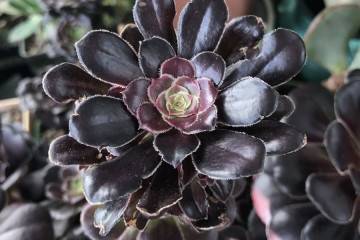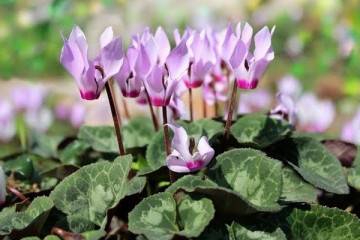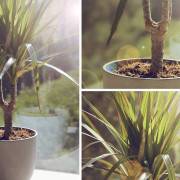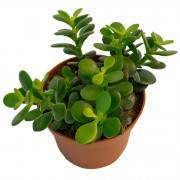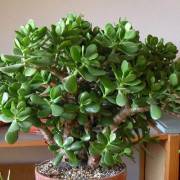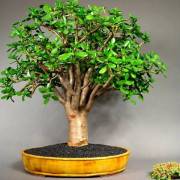Haworthia striped and other types: home care
Content:
A succulent from the extensive genus Haworthia with graceful transverse stripes-ridges on the leaves - one of the most common in indoor culture. A beautiful plant is absolutely undemanding to care, easily multiplies and will decorate every home.
What does Haworthia look like and what family it belongs to
The indoor flower Haworthia fasciata is a herbaceous succulent plant belonging to the Asphodeloideae subfamily. It looks like a rosette of narrow, linear-pointed, very fleshy leaves, colored in different shades of green. On the underside of the leaves, distinctive transverse stripes-ridges of a light shade are clearly visible. Usually, the leaf length does not exceed 10 cm.In an adult plant, the rosette rarely exceeds 15 cm in diameter.
Haworthia: types and common varieties
In the collections of fans of indoor succulents, you can find many varieties of striped haworthia, bred by breeders. Among them, the following are the most popular:
- White Zebra;
- Big Band;
- Variegata;
- Concolor;
- Alba.
All these varieties look especially advantageous in group plantings with other related Haworthia, for example, Haworthia cymbiformis (Latin Haworthia cymbiformis).
Haworthia Cooper (Latin Haworthia Cooperi) is another related species, although outwardly it has a lot of differences. This plant has a rosette only 7 cm in diameter, and each leaf is a reservoir filled with water, and its top is a transparent window that collects sunlight like a lens.
Haworthia pearl (grater, Margaritifera) is a succulent practically without a stem, its rosette is formed by pointed-oval leaves 7-8 cm long and 2.5 cm wide. A characteristic feature of this variety is the bilateral arrangement of round bulges, painted in a pearlescent white shade, very reminiscent of a pearl.
Haworthia Limifolia (limolistnaya) has rather tough leaves about 4 cm wide with pointed ends. It differs from other varieties in the pattern on the leaves. On the outside of the sheet plate, the bulges form waves that are mirrored on the inside. The color ranges from rich green to olive red.
Haworthia Retuza (blunted) is distinguished by its very thick and truncated leaves. The stemless rosette has a diameter of about 12 cm. Each leaf has a triangular cross-section. At the tops of the leaves there are small denticles, and their surface is covered with veins, through which windows filled with juice are visible in the light. The color is variable: from grassy green to red-green.
The sticky Haworthia stretch up to 20 cm in length. Rosettes are formed by small oval-shaped leaves up to 2.5 cm in length and up to 1 cm in width. In adult specimens, 3 rows of small bumps appear on the outside of the leaves. The name indicates that the sap of the plant is very sticky.
Briefly about the history of appearance
The name of the entire genus of succulents Haworthia was given by the researcher and entomologist from Great Britain E. Haworth. The striped species, native to the rocky regions of Africa, was described by the German botanist L. Wildenov in 1821.
Striped Haworthia: home care
On the windowsill, you can collect an impressive collection of succulents, given their extremely slow growth rate and modest size. Striped Haworthia is one of the most unpretentious representatives, which is very easy to care for.
Temperature
In general, this succulent can be classified as thermophilic, but the plant thrives in a wide temperature range - 15-25 ° C. The higher the air temperature, the stronger the plant's need for fresh air. In the warm season, the pot can be taken out to the balcony or loggia, and left in the garden in the south.
The main requirement is not to leave the Hawortia in the rain to avoid flooding the outlet. In winter, the succulent tolerates a drop in air temperature to 10 ° C.
Lighting
The need for sunlight is high for all Haworthies, but at the same time, you should not leave the outlet under the scorching sun for the whole daylight hours. With an excess of ultraviolet light, the leaves change their color to red, and with a sharp transition from room lighting to street lighting, burns may appear on them.
Watering
Like all succulents, Haworthia does not need frequent watering. Its leaves have the useful property of storing moisture for themselves and spending it very slowly. During the whole warm season, the optimal frequency of watering is every 3 days. In winter, do not water more than 2 times a month. It is necessary to keep the soil in the pot slightly moist, without excessive drying.
Humidity
In their homeland, Haworthia exist in a hot semi-desert climate. The air humidity is below 50%. This is one of the reasons why the plant thrives in office environments where the air is very dry. In room conditions, haworthia is also good, no spraying is required, as well as greenhouses.
Priming
The soil mixture is selected so as to ensure its high moisture permeability, but the composition is extremely poor in nutrients.
Top dressing
Succulents at a young age do not feed at all. This is due to the fact that the soil already contains everything necessary for growth, and excess nutrition can cause root rot. From the second year of life, Haworthia is fed in late spring and summer no more than 1 time per month with fertilizer for succulents in a minimum concentration.You should adhere to the rule: it is better to skip feeding than to do it too often.
When and how it blooms
Not all Haworthias bloom, but striped, pearl and Reinwardta bloom with proper care every year. This is not only beautiful, but also gives a chance to get seeds for propagation.
Types of flowers
Depending on the variety and species, a thin and strong peduncle can stretch up to 90 cm in length, but in some species it is rather short and thick. At its end, numerous buds bloom, which can be pollinated by crossing with related specimens.
Flower shapes
The appearance of the flowers is rather inconspicuous, so they are rarely left on the plant for beauty. Each corolla has the shape of a bell curved to one side with fused petals. The color can be white, yellowish, cream, greenish. If pollination has not occurred, then after a few days the flowers will crumble, withering. Upon successful pollination, capsules with very small seeds are formed.
Flowering period
Flowering usually occurs in late spring from April to June. If there is no need to obtain seeds, then the peduncles can be removed so that the plant can direct its forces to growth. But if there are several simultaneously blossoming specimens, you can try your hand as a breeder and try to get a new variety using a needle to transfer pollen from flower to flower.
Reproduction methods
Breeders are very fond of Haworthia for their ability to reproduce in almost all ways. That is why, having havortia on the window, it will not be difficult to share planting material with friends.
Seeds
Sowing is carried out only with fresh seeds of the current year of collection. They usually ripen by autumn, therefore they are sown in November-December, but in the absence of a phytolamp for illumination, sowing can be postponed until March.
It is important to provide the seedlings with greenhouse conditions with an even temperature of about 20 ° C and stable air humidity without drafts. For a year, young rosettes can reach a limiting diameter of about 1.5 cm.
Cuttings
Each leaf has the potential to become a new plant. It is cut off with a sharp knife at the thickest part and left to lie down and dry for 2-3 days. A protective film of dead and dried cells should form at the cut site. Then the leaf is immersed in the soil at the cut point and buried by 1 cm.Then it is left without watering for 1 month. If everything goes well, then the leaf will successfully root and give life to a new outlet.
Side shoots
Some Haworthia varieties are capable of producing side shoots that can be cut off and rooted in a new pot. Before planting, they should be kept in the air for a week to dry out.
Other options
If the plant forms babies, then they are 100% ready-to-plant plants. They have their own roots. It is enough to remove the entire socket from the soil and shake off the soil so that all the plants can be separated from each other. Then they are seated in individual pots.
Transfer
It is important to remember that haworthia can be transplanted no more than once every 3 years. Usually by this time the roots have mastered the volume of the pot completely allocated to them. The optimal shape of the planting tank is wide and shallow.A small layer of drainage from broken bricks, small pebbles or shells is placed on its bottom.
It will not be difficult to buy haworthia to your taste today. The popularity of its various varieties is very high and is not inferior to cacti or fat women. This plant is from the beloved category of many - "planted and almost forgot".
